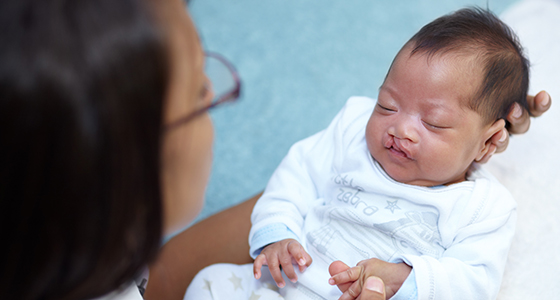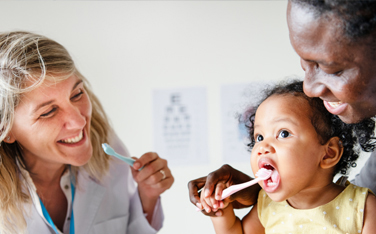Out of the nearly 4 million babies born in the United States each year,1 about 2,650 infants are born with a cleft palate and approximately 4,400 are born with a cleft lip. Some are born with both.2
Wellness
This common condition occurs when the lips or roof of the mouth — also known as the palate — don’t join during development in the womb. While cleft palate can cause more serious problems than cleft lip, it is not as noticeable since it occurs inside the mouth. Although the causes are not completely understood, genes appear to play a role, so cleft lips and palates can run in families.
Oral issues can develop.
Babies with a cleft lip or palate may have issues with feeding, especially if the opening in the lip or palate is large. They may also develop speech and language difficulties or language delays as they grow.
These children are more likely to have problems with their baby and adult teeth, including the size, shape, positioning and number of teeth. They are also prone to having more cavities. In addition to difficulties with brushing, this may be due in part to salivary gland problems that cause their saliva to be less effective in washing away the excess bacteria that causes tooth decay.
Treatment can be extensive but effective.
Treatment for children with cleft lips and cleft palates will often extend through two or three phases. Thanks to this treatment, most of these children will live a healthy life. Care will often begin with a visit to a cleft palate or craniofacial center. A team of experts may be assembled to treat the child, including dental, medical and other health care professionals. The extent of treatment to correct cleft lip or palate and their complications usually depends on the size of the opening.
Surgery is often used to close the lip or palate before the child is 2 years old. If additional problems occur as children develop, more surgeries, dental and orthodontic care, and speech therapy may be recommended. This can include crowns, bridges, braces, orthopedic appliances for correct jaw growth or oral protheses that aid with speech, such as a speech bulb or palatal lift.
Special dental care is needed.
Like all children, those with a cleft lip or palate require proper care, including cleaning, good nutrition and fluoride treatment. Due to special problems caused by teeth that are missing, not properly formed or not correctly positioned, children with clefts should be evaluated by a dentist, who is experienced in treating their needs, no later than their first birthday.
Because of their shape or position, their teeth may also be more difficult for parents to clean. Use a small soft-bristled toothbrush and water as soon as teeth appear. If it’s challenging to clean your child’s teeth due to the shape of their mouth or teeth, your dentist may recommend a toothette — a soft sponge on a handle that contains mouthwash and is used to swab teeth.









